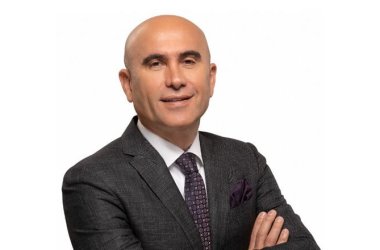CNME Editor Mark Forker spoke to Walid Gomaa, Chief Executive Officer at Omnix International, in an effort to learn more about their decision to integrate their engineering and digital solutions in a bid to drive unique value propositions for their customers, the unique capabilities of its Omnix Metaverse, the impact of their AI monetization consultancy services – and how their HOT Systems are completely optimising software performance. 
Walid Gomaa has cultivated a reputation for himself for his ability to leading organisational reform and change during a decorated career in the technology industry across the Middle East.
Gomaa has worked for some of the world’s biggest technology companies such as IBM, Dell, HPE, and Huawei – and he was officially appointed as the CEO of Omnix International, in January 2024, after joining the digital solutions services provider in 2021.
It could be argued that despite the fact he has an incredibly impressive CV, and that he has been in the industry for almost 40 years, that he has never been more enthused, or driven to succeed now, than at any other point in his career.
The last time CNME caught up with Omnix International, was during LEAP 2024 in Riyadh, so there is plenty to catch-up on, and Gomaa began the conversation by highlighting how the company has decided to take a more unified approach when it comes to their engineering and digital solutions portfolio.
“Since we last spoke, Omnix International has embarked upon a lot of transformation internally as a company. We recognised that as a digital services provider we need to streamline our current product offerings to make sure that they are able to support the current initiatives that are happening in the marketplace. Traditionally, Omnix has two different DNAs as a company. We have an engineering DNA and a digital DNA, but what I started to see over the last 2-3 years was more of a link between the two. Ultimately, what that enabled me to do was to take some of the engineering solution offerings and some of the digital solution offerings and bundle them together to make sure that we are providing a unique value proposition to our customers that nobody else in the marketplace can do,” said Gomaa.
Gomaa highlighted the creation of their Omnix Metaverse Platform, as an example of the new value proposition they are delivering since infusing their engineering and digital DNAs.
“We decided to create our own Omnix Metaverse Platform, and if you recall, initially when it came to the Metaverse space everybody was talking about wearable technology. However, what we quickly realised following consultations with our customers and partners is that you need lots of other things in addition to just wearables. You need networks, back-end integration, and ultimately you need to provide a whole host of different services, it’s not enough to be focused solely on wearables. We decided to line up our offerings in a way that we don’t say engineering, and digital anymore, we’re now providing specific solutions that are tailored to meet the unique needs and challenges of customers, and we leverage our technology to help them address those obstacles. That’s where we introduce and start to talk about the Digital Twin Metaverse, which is essentially the way in which we can integrate the virtual world with the physical world,” said Gomaa.
Gomaa added how part of their own transformation and restructuring of their product and solution offerings, saw the company create solutions that helped customers with their data domain, and he also highlighted how that approach has now put them in contention to land large-scale smart infrastructure projects in both the UAE and KSA.
“We are helping customers in relation to their data domain. Data is becoming a big, big issue for a lot of customers, and naturally we decided to focus on the data domain space. As a result of that pivot, we have landed a number of sizeable projects in terms of data visualisation and data management, and this allows us to diversify our business model, and from a forward-looking perspective this also positions us differently in the market. We are competing for the big smart infrastructure projects in the marketplace now, whether that be in Saudi Arabia, or the UAE, we are putting ourselves in the frame. We want to demonstrate the unique value propositions that we can provide when it comes to smart infrastructure,” said Gomaa.
AI is everywhere, and unsurprisingly Omnix have invested heavily into AI, but as Gomaa pointed out they have decided to approach it from a different angle in terms of its implementation.
He highlighted the growing impact of its AI Monetisation Service.
“Look everyone is talking about AI. We are approaching it two-fold, both from a knowledge perspective, and from the fact that we have started to implement AI in different ways. Firstly, we looked at AI from a use-case based approach, which I believe is fundamental. Essentially, when we say use-case based AI approach, it means we have done this, and we know how to do it pretty well in fact. However, now we’re going to implement it and scale it from a customer perspective. Now to do that, we recognised a gap, a big gap actually in relation to business users and technical users. What we started to do was create a specific service to address the issues that exist around POC and validation, and we have called it our AI Monetisation Service. It’s basically a consultancy service with customers, we engage with them directly, and create ideation workshops. We identify the use-cases, we map out how we ensure that these use-cases yield a positive ROI. We want to help customers develop AI use-cases that deliver tangible business outcomes for them, and that is what the AI Monetisation Service provides,” said Gomaa.
Omnix International has drawn acclaim for the performance of its HOT Systems.
According to Gomaa, the HOT System has been purpose-built for industries like AEC, Media, and Manufacturing — which is driving higher productivity and lower operational costs.
“The inception of our HOT System was driven by a customer requirement. We are dealing with engineers across every domain, but these engineers are using very heavy software on their machines, and we witnessed first-hand the struggles they were encountering when they were trying to open a model. I mean in many cases it was taking them 2 hours to open a specific model. Now if we can reduce this process from 2 hours, to say around 15 minutes, then I can give these engineers back 75% of their time. This was the starting point for us, but we decided to do a lot a of R&D around it, and we quickly discovered that it was not going to be enough to bring CPUs and GPUs and bundle them together in the hope that the system will perform better. We realised that we needed to understand the path of the software within the machine, so with that in mind, it became evident that the software needs to be optimised. The O in the word HOT, stands for optimisation. We are optimising the path of the software in the machine to make sure the performance is where it should be,” said Gomaa.
Gomaa stressed that HOT is a breakthrough solution that incredibly delivers up to 30% better performance for 3D designers, CAD/BIM engineers, simulation developers, and content creators.
“We want optimise performance. We’ve done the benchmarks for the customers, and they can see the value we are delivering in terms of performance. We are partnered with a major player from the construction industry, who has over 500 machines in operation. Now the unique selling point we have is the fact that other vendors like Dell and HP will have machines that are optimised, and they are extremely powerful in terms of CPU and TPU, but they’re not optimised when you run the software and set the benchmarks. We deliver a 30% result in terms of higher performance,” said Gomaa.
The dial of the conversation turned back to the data pipeline that is needed for digital transformation, and as Gomaa pointed out if the data is incorrect then the AI business use-case being pushed forward is going to be completely redundant.
“The entire technology landscape is fixated on AI, and rightly so, and a huge element within the AI conversation is the role of data analytics. However, when its comes to AI, if the data is either incorrect, or inconsistent, then it is going to be useless. So, businesses need to go back to the drawing board to ensure that their data is correct. And this is why at Omnix, we talk so much about the concept of the data pipeline and the need for it, any engagement we have with customers we advocate for the data pipeline approach. You have to understand the data in the various different stages in that data pipeline, and you need to have the right tools and solutions to help you on that data pipeline journey. The first part of the process is to have the right data framework, data management and data governance models in place, because you have to understand who is using the data, and who is actually authorised to change the data,” said Gomaa.
Gomaa concluded a superb discussion that highlighting the key role the start-up ecosystem will play in terms of helping businesses with their data pipeline.
“When we were looking at the marketplace, we weren’t just looking at the major vendors, we scanned the start-up ecosystem because there are some brilliant start-ups producing some great output when it comes to the data pipeline space. When you look at solutions, I’d advise businesses to not only look at the large vendors, because some of the start-ups have the solutions that are a perfect fit for many enterprises about to start on their data pipeline. The data pipeline starts with data collection, so you need comprehensive data collection engines, and again, that’s where AI enters the game, because these collection engines are now becoming powered by AI,” said Gomaa.





